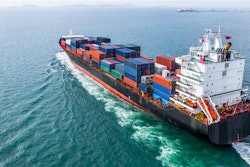
A handful of trade and geopolitical events, besides the Coronavirus disease (COVID-19) have led to the disruption of the global supply chain. The result has been high prices across the board and a recognition that supply chains need to be more resilient. And, this became extremely evident after the Suez Canal blockage, showing how trade and globalization flounder when shipping is impacted.
According to the United Nations Conference on Trade and Development (UNCTAD), around 80% of global trade by volume and over 70% of international trade by value happens by sea. Although the shipping crisis marked the beginning of the crumbling of the global supply chain, things were in danger of breaking down even before COVID-19 hit the world. The cause was China and the U.S.’s fraught relationship with the country.
The timeline
The initial signs of a global trade collapse took place when China's exports fell by 17% in the first two months of 2020, and production came to a standstill in the wake of the pandemic.
As the rest of the world began waking up to the COVID-19 disaster, it was assumed that global trade would be among the biggest victims. However, in February 2020, there emerged an urgent need for supplies across the world. But, the shipping industry was struggling to deal with multi-country lockdowns and the huge workforce shortage at ports.
Toward the end of 2020, the world seemed to be recovering from the first wave of the pandemic. While the virus was still a threat and some countries were under lockdown, many economies restarted, albeit in a very different world. The global supply chain became a crucial factor in the swift and safe delivery of goods and services. Yet, it wasn’t business as usual. An acute container shortage led to a steep increase in freight rates, which increased the prices of goods and services as importers passed this rate on to consumers. At one point, for every 100 containers imported in the United States, only 40 were exported while 60 were sitting empty at the ports.
Furthermore, things didn’t improve noticeably in 2021. The reliability of the shipping ecosystem was questioned, especially after the Suez Canal blockage, which saw 300-plus ships at a standstill.
Of course, the global supply chain is not just about the shipping crisis, though it occupies the largest part. There are also issues of production bottlenecks, the energy crisis, and the impact of climate change on crops and transport.
What has been the impact of the breakdown in the global supply chain?
The most obvious impact is that trade has slowed, affecting importers, exporters and consumers alike. The ecosystem is dealing with high freight rates, which importers are transferring on to consumers. A sudden spike in prices has led the U.S. Federal Maritime Agency to launch inquiries into the freight rates hike.
The other effect, mainly felt by the United States, has been the commercial cold war with China. This, in many ways, has been both a cause and an effect of the breakdown in the supply chain. For some time now, China has been replacing an export-driven model of growth with growth driven by domestic consumers. Exports have fallen as a share of China’s GDP from above 35% before 2010 to less than 20% today.
In itself, this wouldn’t have led to severe repercussions. However, China also began sourcing supplies and technology domestically instead of importing from the United States as part of its inward-looking policy. The United States retaliated with its China Plus One strategy, under which importers looked at markets outside of China, such as India, Mexico, Vietnam, and Thailand. At any other time, this may not have had an adverse impact on trade, but COVID-19 has led to an acute shortage of workforce in all these countries, leading to disruptions in production and transportation.
While it’s not possible to anticipate events like the pandemic, importers can insulate themselves from the shock of the supply chain breaking down. Efficient inventory management is one of those ways. Between the commercial cold war with China and the China Plus One strategy, U.S. buyers are sitting on historically low inventory volumes. However, this problem can be resolved with U.S. buyers tapping suppliers in Mexico, Taiwan, and other Asian competitors to China.
However, a larger issue needs government intervention. According to Forbes, a small handful of firms control some 80% of global shipping. This has led to monopolistic action regarding high freight rates and arbitrary charges. With no other recourse, importers pay up and then pass the increase on to consumers. However, reports say that the Biden administration is looking to take anti-monopoly actions against these firms.
Unfortunately, there is no quick fix to getting supply chains back to strength. Global economies will first have to address the impact of COVID-19, an impact that is likely to be worse as new variants come up. Already, many countries are shutting their doors to prevent the spread of the Omicron variant; this will have an adverse effect on the supply chain, from factories to ports and shipping.
COVID-19 will be the wild-card when it comes to fixing supply chains. Like the Biden administration is doing, other nations may take action against monopolistic shipping firms. And, some may take steps to ensure that labor is not disturbed in the event of future lockdowns. But, it all depends on how the COVID-19 pandemic is managed and when it will loosen its grip.
For now, it could take up to mid-2022 at the earliest for supply chains to be fixed. Even as there is some agreement that untangling the global supply chain snarls will take time, there is also a very clear understanding that supply chains created for the post-COVID-19 world will have to be resilient yet flexible in order to survive under immense global pressures.















![Pros To Know 2026 [color]](https://img.sdcexec.com/mindful/acbm/workspaces/default/uploads/2025/08/prostoknow-2026-color.mduFvhpgMk.png?ar=16%3A9&auto=format%2Ccompress&bg=fff&fill-color=fff&fit=fill&h=135&q=70&w=240)

